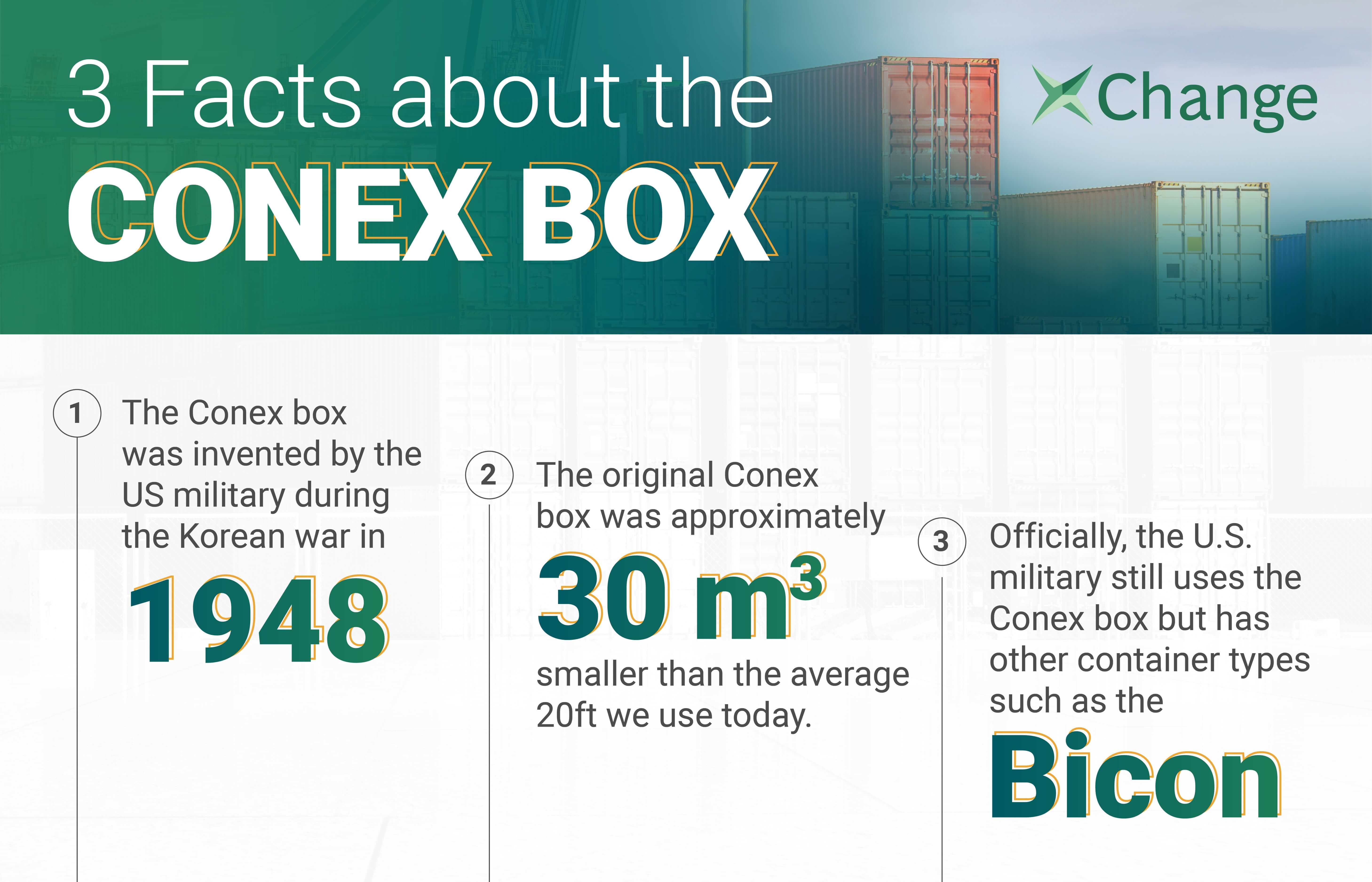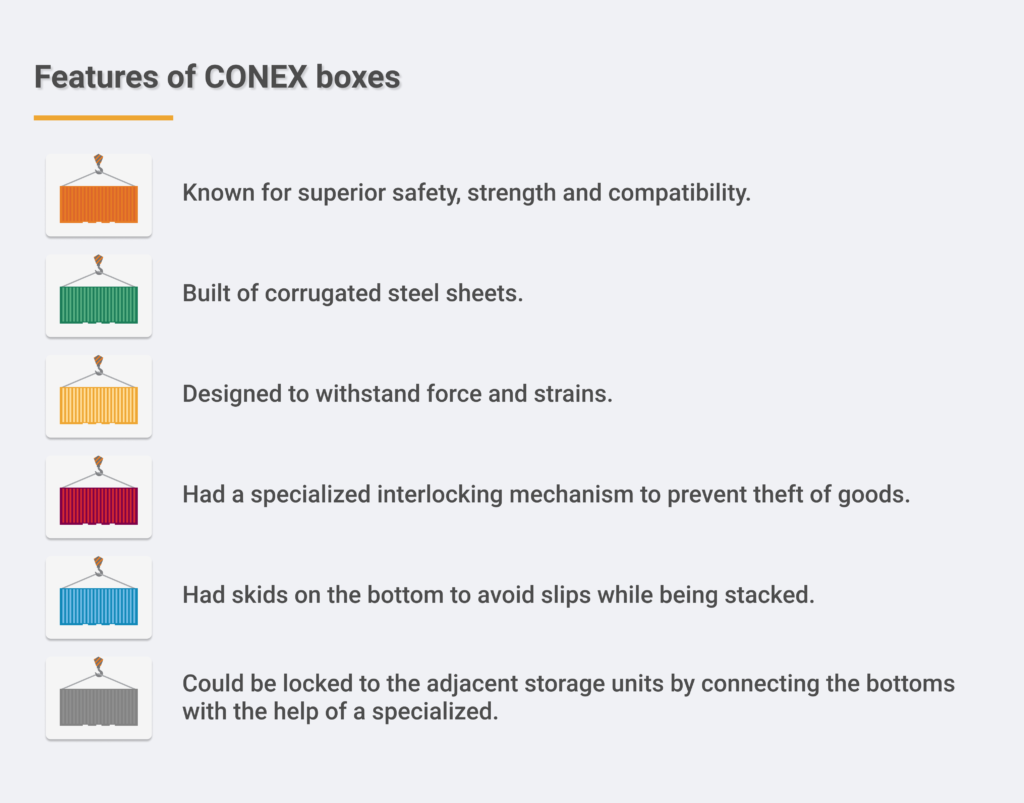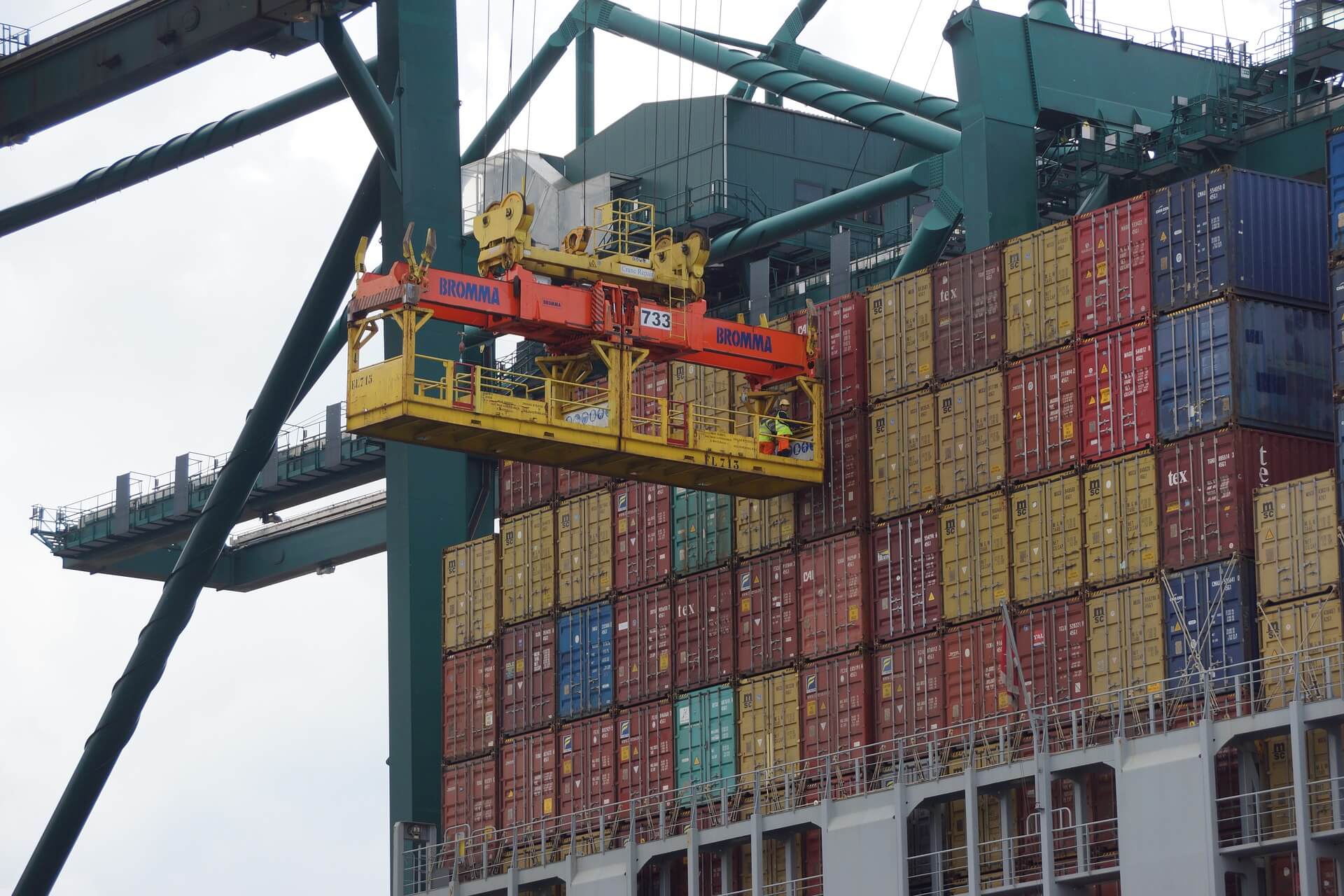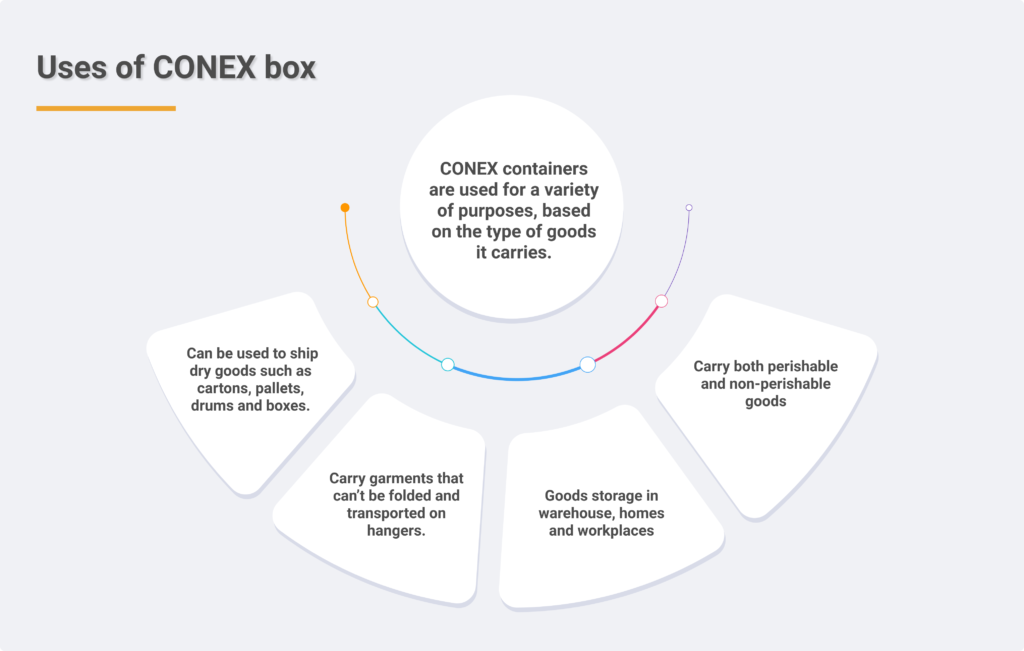Interested in the CONEX box? Learn all there is to know about the box that revolutionized the shipping industry. Plus, find out how to lease CONEX containers at the best rates from 1,700+ vetted suppliers quickly and easily today.
The CONEX box was one of the most groundbreaking inventions in history. The box revolutionized the shipping and logistics industry ever since. The boxes formed the basis of what we call Intermodal or ISO containers today.
Before the advent of reliable shipping containers, the pricing for export and import across borders and retailing countries (especially overseas) was high. Then, came CONEX boxes. These shipping boxes cut down major costs and provided a reliable and convenient method for transporting all kinds of consumer goods.
What is a CONEX box?
CONEX box, cargo container, and shipping container, coming across so many different names can sometimes be confusing and overwhelming. But it all gets simple when you know that all these names mean the same. The term CONEX is an abbreviation of container and express.
It indicates that the box can travel easily by all means of transport. Hence, cutting short on the travel time. These boxes further evolved into modular units that could be stack efficiently to store more cargo in one location. CONEX box is also called a shipping container, and cargo containers are sometimes called CONEX boxes or shipping containers.
Here’s everything you need to know about these versatile boxes.

History of CONEX containers
During the wars, the U.S. military was on the lookout for convenient and faster methods to transport supplies to its soldiers. The available option, transportation by cargo, was inefficient. It required additional time for loading and unloading the breakbulk for transportation by road. Also, the transported goods were prone to damage during transit.
The troops required a box that was compatible with the road trailers and provided safe transportation options while being cost-efficient. During that time, in the 1940s, the use of aluminum and steel containers for transportation was getting popular.
In World War II (1939-1945), the U.S. Army began experimenting with containers to ship supplies. In 1948, they came up with “The Transporter” – a prototype of a CONEX box. The transporter was a sturdy corrugated steel container that could carry about 9000 pounds (4.08 t) of goods. It was 8ft 6” (2.59 m) [length] x 6ft 3” (1.91 m) [width] x 6ft 10” (2.08 m) [height].
Due to its great success in Korea, in late 1952, the Transporter developed into a proper Container Express (CONEX) box system. Later, they also added a half-sized unit for smaller quantities of goods.
Features of the Conex box
CONEX boxes were versatile, safe, and could be stacked under transport. That made it a perfect transportation container.

The boxes gained their strength with the corrugated steel structure. Each container had skids at the bottom, so they didn’t topple or slip while stacked. Another unique feature of the CONEX was its interlocking mechanism. It was used to connect adjacent units from below and was released when required. The container also had lifting rings on each of its four corners. That way, it was easy for cranes to carry them.
By 1967, the U.S. troops had more than 100,000 CONEX boxes to support them during the Vietnam War. This was the world’s first global application of present-day intermodal containers. Presently, the term CONEX is still used for standard shipping containers.
How did the Conex box get its name?
When it was first invented, these boxes were called “transporters” due to obvious reasons. Because these boxes were fast and time-saving, later they were called the “Container Express”. This was, then, shortened to a more popular term: “CONEX”.

Conex box vs intermodal containers: What’s the difference?
Yes. CONEX boxes were later developed and were then called shipping containers. So, the terms, ISO Container, Intermodal Container, Standard Shipping Container, or CONEX Container — essentially mean the same.
They are usually found as 20ft or 40ft standard ISO containers used for a variety of purposes. Learn more about them here.
Are you looking for containers? On Container xChange you can find containers in more than 2,500+ locations around the world. All you have to do is type in your pick-up and drop-off locations. Then you’ll get a list of available containers where you need them.
Click on the banner below and see the platform in action.
How you can use Conex boxes
Though these containers were invented to ship war supplies and goods, CONEX boxes are used for a variety of different purposes.

In the present day, CONEX boxes are used for:
- Transporting goods and products across oceans
- Warehouse storage of perishables and other goods
- Equipment and tool storage within homes and other places
- Storage option for various workplaces
- As house renovation and shifting containers
- Agricultural equipment storage
- Storage of bulk documents in offices
Lately, they’re also being transformed into homes and office spaces.
Dimensions of the CONEX box
During the war time, CONEX boxes or transporters were: 8ft 6″ (2.59 m) [length] x 6ft 3″ (1.91 m) [width] x 6ft 10″ (2.08 m) [height]. Later, smaller half units were also made with dimensions: 6ft 3″ (1.91 m) [length] x 4ft 3″ (1.3 m) [width] x 6ft 10″ (2.08 m) [height]. The half sizes were of the same height as the regular CONEX.
In contemporary times, the CONEX transformed into a fully-functional standard shipping container based on standards set by International Organization for Standardization (ISO).
Standardization allowed these containers to be used easily across rail, road, or sea. ISO containers are 20ft or 40ft in length with varying breadth and height. The most common dimensions available in the market are:
- 1 TEU: 20ft x 8ft x 8ft 6”
- 2 TEU: 40ft x 8ft x 8ft 6”
- High Cube: 20ft x 8ft x 9ft 6”
(TEU, or Twenty-foot Equivalent Unit, is the standard unit of measurement indicating the capacity of a container. It is based on a volume of 20 foot long containers.)
What are CONEX storage containers used for?
CONEX containers are perfect for storage. Some of their most common usages are as follows:
Warehouse storage and shipping of perishables and non-perishable goods
These boxes can serve as storage units on construction sites to hold construction tools and equipment.
Storage of agricultural equipment
Here again for large agricultural hardware these boxes are a boon. They come in a variety of dimensions and have high capacity weight loads to hold all kinds of heavy cargo.
Storing of bulk documents in offices and schools
CONEX containers are ideal for storing school supplies or playground and athletic gear. Bulk documents in offices can also be stored and shipped using these boxes.
Retail storage
CONEX boxes are a great match for retail storage. That’s because they are designed specifically for palletized storage.
How much do CONEX boxes cost?
CONEX boxes are popularly used because of their:
- Utility
- Efficiency
- Safety
- Durability
- Compatibility
- Affordability
An ISO container, Intermodal container, or CONEX box can easily last for more than 10-12 years on average. If maintained well, some containers are known to last for 25 years as well. Because of their durability, CONEX boxes or Intermodal containers are cost-efficient.
Choosing the right CONEX box for you
Before you set out to buy or rent a CONEX box, it is important to understand your needs. These boxes may look the same but come in different measurements. You have to be clear on why you need them and if they will fulfill your requirement. This is where Container xChange lends a helping hand. You can know more about the different container types here.
Should you buy or lease a Conex box?
Container leasing increases your flexibility, saves storage fees, and avoids maintenance costs. This is also ideal if you are looking for a container for a short or one-time event. You can also say good-bye to your worries about maintenance, liability or disposal hassles.
Usually, a CONEX or ISO Container is priced between US $2,000 to US $5,000. Depending on what you need containers for, leasing the boxes can be a better option.
Get Conex boxes from 1,700+ vetted suppliers on xChange
Now you know all that there is to know about CONEX containers. So, let’s get you that box for your shipping needs. Here’s how:
- Head on over to our platform.
- Become a member.
- Type in the container type, and choose your pick-up location.
- Choose from a list of vetted certified partners. Get to work with big names in the industry. We work with trusted users around the world, some of whom include, Seaco Global, SeaCube, Trident International, and more.
- Make your offer and start negotiations.
- Make secure payments right on the platform.
1,700+ vetted members and 100, 000+ containers available in 2,500+ locations worldwide, all at your fingertips.
Click on the banner below, and our expert team will show you how the xChange platform works and help you find the perfect box for your needs.




